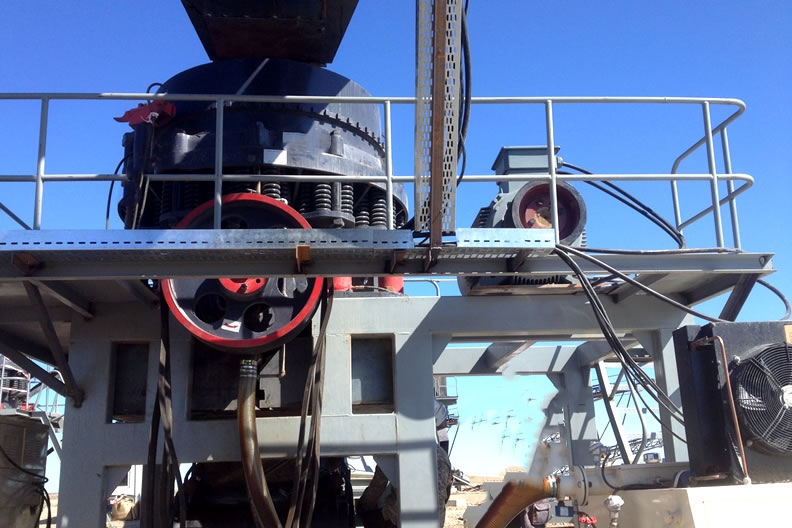Which is better: Cone Crusher or Jaw Crusher?
Which is better cone crusher or jaw crusher
Cone Crusher
Jaw Crusher
In the realm of industrial material processing, the age-old debate between Cone Crushers and Jaw Crushers continues to spark interest among professionals seeking the most efficient and effective equipment for their crushing needs. While both types of crushers have their loyal followers, the question remains: Which is truly better?

Jaw Crushers have long been recognized for their robustness and simplicity, making them a popular choice for primary crushing applications. Their design features two jaws—one fixed and the other moving—that mimic the motion of a beast's chewing mechanism, capable of handling large feed sizes and high crushing ratios. This makes them particularly well-suited for breaking very hard or abrasive materials, where their brute force approach is a significant advantage.
On the other hand, Cone Crushers operate on a different principle. They utilize a rotating mantle that presses against a stationary bowl liner to compress and fracture the material. This design allows for a more consistent product size and a higher degree of material reduction in a single pass, characteristics that make cone crushers preferable for secondary and tertiary crushing tasks. However, traditional cone crushers rely on mechanical adjustments to control the output size, which can limit their versatility compared to newer hydraulic variants.
The debate between cone crushers and jaw crushers has intensified with the introduction of advanced Multi-Cylinder Hydraulic Cone Crushers. These state-of-the-art machines incorporate multiple hydraulic cylinders, offering unparalleled control over crushing force and clearance. This precision not only ensures that the end product's size distribution is precisely within desired parameters but also makes them ideal for applications requiring a high degree of accuracy.

Moreover, Multi-Cylinder Hydraulic Cone Crushers boast increased efficiency due to their ability to handle larger feed sizes and generate significant crushing force. This boosts productivity while extending the equipment's lifespan by reducing strain on its components. The hydraulic system's user-friendly interface also simplifies operation and adjustments, ensuring consistent performance under variable load conditions.
So, which is better? The answer lies in the specific requirements of the application. For heavy-duty, primary crushing of extremely hard and abrasive materials, Jaw Crushers remain an excellent choice. However, for projects demanding precise control over product size and quality, along with the ability to handle varied materials effectively, Multi-Cylinder Hydraulic Cone Crushers are emerging as the superior option.
As technology evolves, so too does the landscape of material processing. With advancements like the Multi-Cylinder Hydraulic Cone Crusher, the balance is tipping in favor of cone crushers for those seeking the cutting edge in precision and efficiency. Professionals looking to capitalize on the latest technology now have a compelling reason to lean towards sophisticated hydraulic cone crushers, marking a shift in the traditional cone versus jaw crusher debate.
 O'zbek
O'zbek slovenský
slovenský Azərbaycan
Azərbaycan Қазақ
Қазақ Latine
Latine ລາວ
ລາວ български
български नेपाली
नेपाली فارسی
فارسی Javanese
Javanese Українська
Українська Lietuvos
Lietuvos Română
Română Slovenski
Slovenski پښتو
پښتو Punjabi
Punjabi Bosanski
Bosanski Malti
Malti Galego
Galego Afrikaans
Afrikaans Esperanto
Esperanto 简体中文
简体中文 Српски
Српски मराठी
मराठी Ελληνικά
Ελληνικά čeština
čeština Polski
Polski ไทย
ไทย Nederlands
Nederlands Italiano
Italiano Tiếng Việt
Tiếng Việt Deutsch
Deutsch français
français русский
русский Português
Português Español
Español 한국어
한국어 Svenska
Svenska Malay
Malay اردو
اردو norsk
norsk Indonesia
Indonesia عربى
عربى Gaeilge
Gaeilge Türk
Türk Pilipino
Pilipino हिन्दी
हिन्दी Dansk
Dansk বাংলা
বাংলা English
English


What is a Metering Conveyor
In modern material handling systems, efficiency and precision are critical to maintaining smooth operations. Among the many specialized conveyors used in industries such as packaging, food processing, mining, and logistics, the metering conveyor plays a vital role. But what exactly is a metering conveyor, and why is it becoming increasingly important in production environments?
Read MoreJuli Engineering Gains Global Recognition Among Mining Conveyor Manufacturers
The mining industry relies heavily on efficient material handling systems to ensure productivity and safety in large-scale operations. Among the many solutions available, mining conveyors stand out as indispensable equipment for transporting bulk materials such as ore, coal, and aggregates. As demand for advanced solutions grows, Juli Engineering has established itself as one of the most reliable mining conveyor manufacturers, offering durable, high-performance systems tailored to global mining needs.
Read MoreDesign and Application of a Comprehensive Coal Spillage Handling System for Downwards Transportation Belt Conveyor
A belt conveyor with an annual production capacity of 3 million tons is installed in a main inclined roadway with a steep angle of 22°. During operation, issues such as coal overflow, spillage, and falling coal occur, particularly when transporting raw coal with high moisture content.
Read More